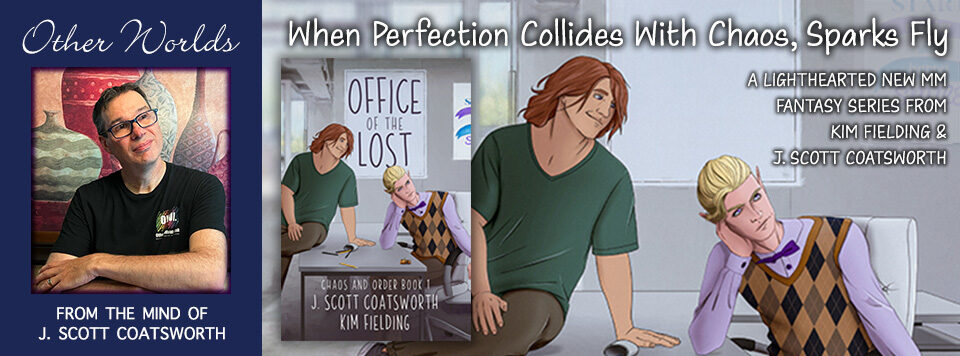
For most of my life I considered myself a novel writer. Novels were my preferred reading length – I love getting lost in an epic story with lots of room to explore. Give me five-hundred pages, a thousand even, and let me roam in your world.
And if it’s an epic series of 10+ books? I am so there, with reading glasses on.
So it’s curious that I find myself writing lots of shorts these days too.
Don’t get me wrong. I still LOVE novels (reading and writing them), and have two in progress with a third soon to be started. But shorts have a few built-in advantages, especially in the spec fic world:
- They’re Fast: For a 10K short, my total turn-around time, including beta edits, is about a week to a week-and-a-half.
- They Pay Better: They pay better than many novels, especially self-published ones. I’ve had novels where I’ve barely made $200 in the first year, but I’ve sold a 5K short story for $500 and had the rights back in three months.
- They Let Me Explore More Ideas: My novels usually revolve around ONE BIG IDEA, and I’m working on that same one for three to four months. But with short stories, I can try out a bunch of different things my writer brain spins up. And sometimes they even lead to more. “The Last Run” led to the current trilogy I’m working on, and the first part of “The Stark Divide” was once a stand-alone short.
So how do you go from writing novels to writing shorts? I’ve evolved a few helpful rules over the last few years, since I sold my first one (“The Bear at the Bar”) for an anthology:
- Start With a Great Idea/Prompt: Short fiction is, by and large, much more idea-driven than long fiction. Finding a great concept to build your story around will help make it more coherent and give you something to drive toward.
- Figure Out How Long You Want to Go: Many magazines in the spec fic market only accept stories that are 10K or less; some won’t go higher than 5K. And remember, as a new writer (to them), you’re asking them to take a risk on your work, so the longer/more expensive your story is, the better it has to be. So consider this before starting out, and keep an eye on your word count as you go. The longer your story, the fewer potential buyers there will be for it.
- Figure Out Your POVs: For me, in shorts and novellas, length is strongly correlated with POV count. So if I want to stay under 10K, I generally use one character POV. If I am shooting for 10-20K, I may up it to two. It’s not a hard-and-fast rule, but generally speaking, it’s easier for me to fill more story space with more character POVs.
- Choose a Killer Opening Hook: Many editors are swamped with queries, so in order for yours to stand out, you need a killer hook. Instead of: “John sat at his desk, staring at his test,” how about “The floor opened up under John Crankshat’s desk, swallowing him whole and sending his just-completed test flying into the empty air.” Who is John? Why is his last name Crankshaft? And why the hell did the floor just open up and swallow him whole? And make sure your first page in general sparkles too – it’s all the editor will likely read before making a decision on your story.
- Balance Your World-Building and Plot Arc: This is hard for me. I tend to go heavy on worldbuilding, but you just don’t have much room for that in a short story. For our annual 300 word flash fiction contest, we tell writers that every word counts. But that’s equally true if you’re limiting yourself to 5K or 10K. Find small, unique, memorable details to include that will convey the flavor of your world, and sprinkle them throughout your story.
- Ask 3-5 Beta Readers to Read It: You’re too close to your story to see its flaws. Trust me. Find yourself a few beta readers, including at least one who knows your setting or main idea, and ask them for high-level feedback. For my recent short High Seven, I had some great comments from someone who’s more familiar with the art world than I am. For another short set in Vancouver, a Canadian writer helped me make sure the Canada details were right. And “Prolepsis,” set mostly in 1986, benefitted greatly from assistance from other folks who lived through the Eighties. Plus if you’re lucky, your betas will catch some of the little typos you missed.
- Cut What You Don’t Need: This is the hardest one for me. I want it ALL! But with a short story, you want to get in and out quickly with no excess fat. Seasonings, yes. You want to give your readers all the feels. But if it doesn’t advance the story, trim it down or cut it out.
I don’t see myself giving up on either short stories or novels any time soon. Writing shorts is a different skillset than writing long-form, but I enjoy both.
And hopefully some readers who run across my shorts in various magazines and anthologies will enjoy them enough to go looking for my novellas and novels.
In the meantime, I’ll keep honing my craft.
To my writer friends – do you write short stories? If so, what are some of your tips and tricks?
